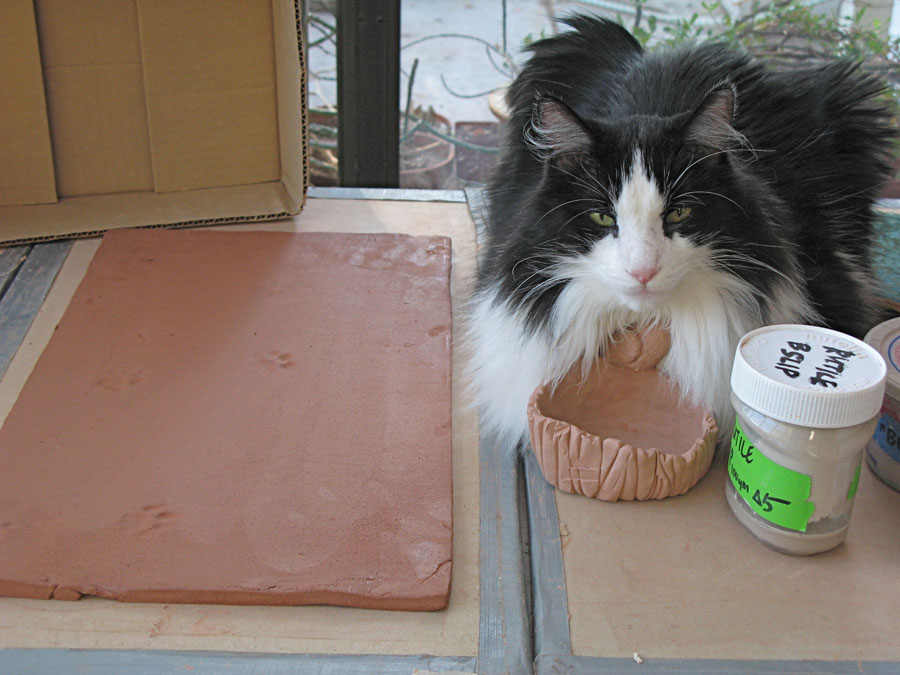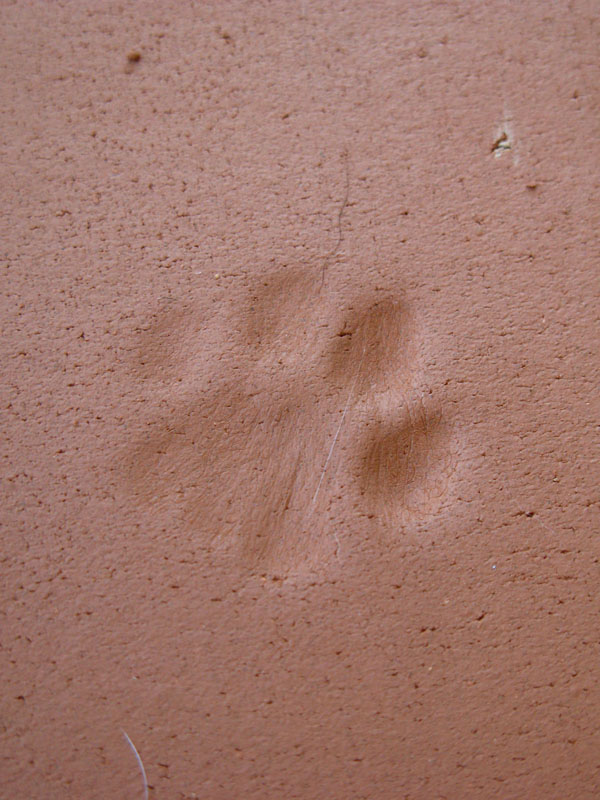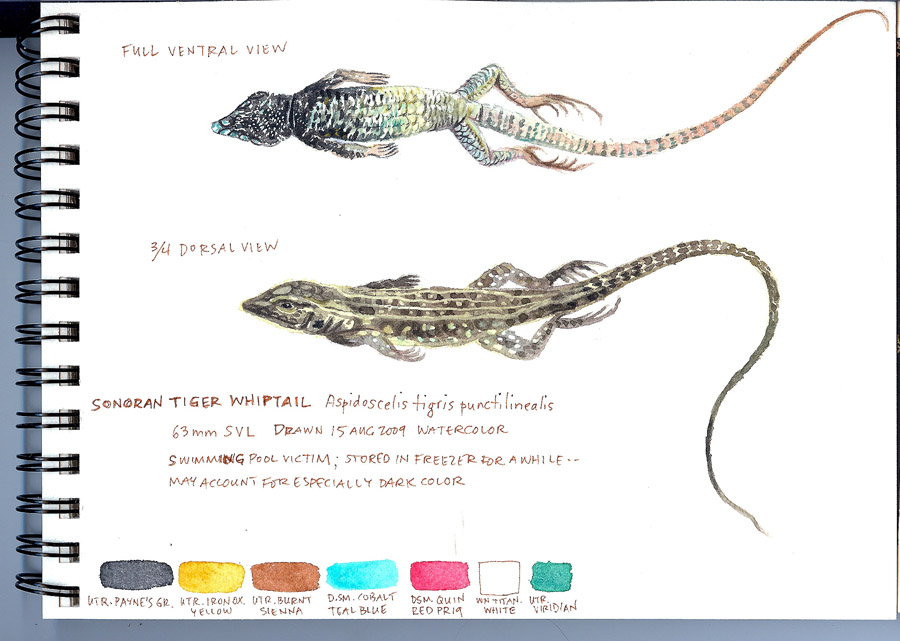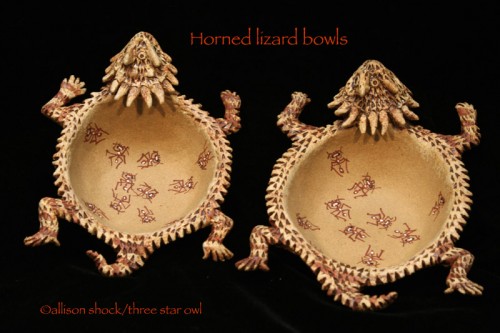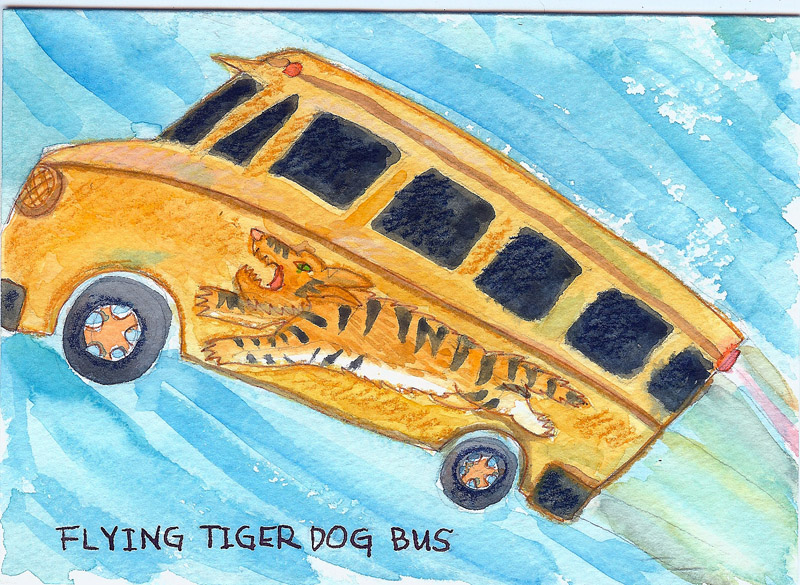Quite a Toadly Frog
It looks a lot like a toad, with a stumpy physique and warty skin, but it’s a Canyon Tree Frog (Hyla arenicolor). How to tell it’s a frog? One way: no parotoid glands — instead you can see the round flat areas of its tympani (hearing structures) behind and slightly below the eye.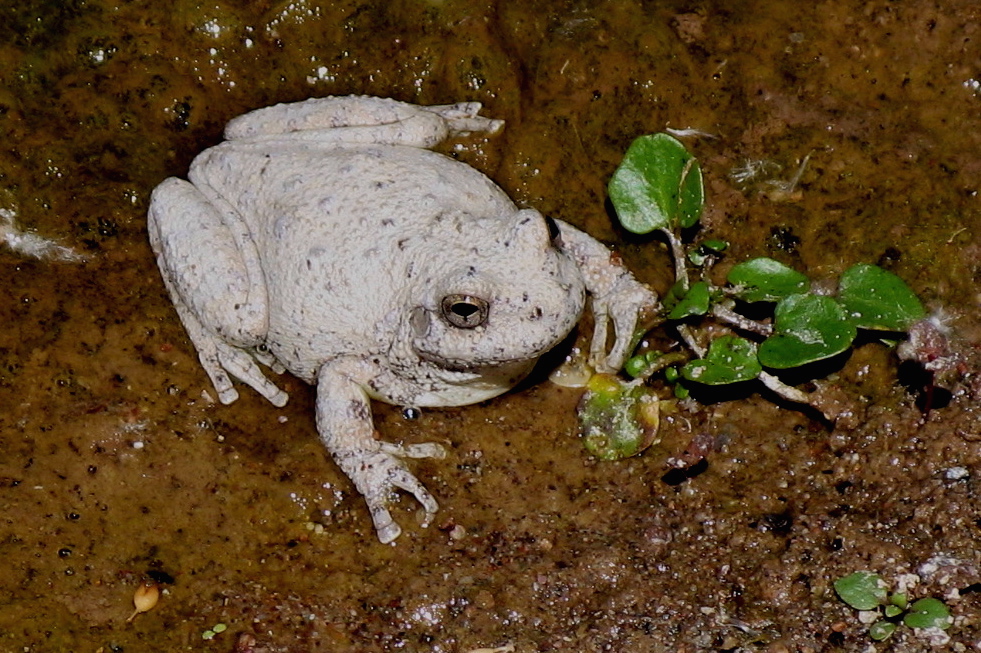 Also, this frog has large adhesive pads on the ends of its toes to aid in climbing (after all it is a tree frog), which most toads don’t do. Canyon tree frogs are variable in color and spottage (a technical term: feel free to pronounce it spot-AAHJ), but this individual is fairly pale and nearly spot-free. They inhabit rocky stream courses in Arizona and the Southwest with intermittent or permanent water, where they enjoy feeding upon small invertebrates. This one was photographed at Aravaipa Canyon. (Photo A.Shock, 2009)
Also, this frog has large adhesive pads on the ends of its toes to aid in climbing (after all it is a tree frog), which most toads don’t do. Canyon tree frogs are variable in color and spottage (a technical term: feel free to pronounce it spot-AAHJ), but this individual is fairly pale and nearly spot-free. They inhabit rocky stream courses in Arizona and the Southwest with intermittent or permanent water, where they enjoy feeding upon small invertebrates. This one was photographed at Aravaipa Canyon. (Photo A.Shock, 2009)
Etymology
Hyla arenicolor: arenicolor is a Latin compound meaning sand-colored: to the Romans as well as to us, an arena is a sand-covered area. The origin of the genus Hyla is a bit more complex, and much more picturesque. To start, the greek work ὗλη — cognate with the more familiar Latin sylva, means woodland, and may come into play in the naming of a genus of tree frogs. 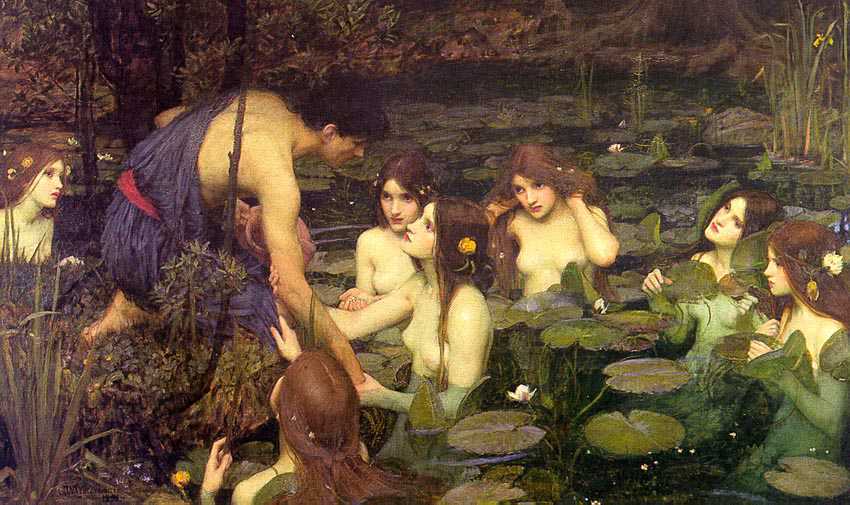 But a more colorful tradition connects the genus name with Hylas, one of the original Argonauts who while searching for fresh water ashore was pulled into a woodland spring by a desirous water nymph. Hylas’s companions — including Herakles and Jason — searched the island for him in vain, crying his name over and over: the story goes that the incessant cry of his name relates to the repetitive calling of tree frogs.
But a more colorful tradition connects the genus name with Hylas, one of the original Argonauts who while searching for fresh water ashore was pulled into a woodland spring by a desirous water nymph. Hylas’s companions — including Herakles and Jason — searched the island for him in vain, crying his name over and over: the story goes that the incessant cry of his name relates to the repetitive calling of tree frogs.
above: the story of the rape of Hylas, “Hylas and the Nymphs” by J.W. Waterhouse, 1896. If you’re lucky enough to be in London during the next couple of weeks, check out the exhibition: J.W.Waterhouse: The Modern Pre-Raphaelite, it’s on at the Royal Academy until 13 Sept 2009. (And, there’s a pleasing similarity between the color schemes of the Waterhouse painting and the tree frog photo at the top: the watery-brown background, ivory skin tones and heart-shaped green foliage.)
Is birding green?
The Telegraph website of the UK has posted a short column hastily summarizing a research paper concluding that Birding Is Not Green, especially competitive birding and twitching. The Telegraph article is not very in-depth, refers mostly to Britain (although the issues are largely common to the US as well, and the primary author is at University of Illinois, and is a birder himself) and takes a bit of a snarky tone — you birders aren’t as green as you think — but it’s still worth a glance.
The author of the study points out that while chasing rarities, twitchers (the mostly British term for avid birders who mainly are interested in checking off bird species from their lists) log many gasoline-hogging hours in their vehicles, or taking long flights to see hard-to-find species or vagrants.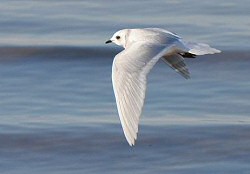 A case in point from my own experience: many years ago a pinkish Ross’s Gull — usually an arctic bird — showed up near the Alton Lock and Dam on the Mississippi River north of St. Louis. People were coming from places as far away as Italy and South Africa to see that bird, because it was closer and easier to get to than the high arctic. And local birders made the drive twice or more, to log the bird in two separate years (it was at the New Year), and in two separate states, since it was at times visible from both the Missouri and Illinois side of the river! A much more recent Ross’s gull at the Salton Sea created a similar scene.
A case in point from my own experience: many years ago a pinkish Ross’s Gull — usually an arctic bird — showed up near the Alton Lock and Dam on the Mississippi River north of St. Louis. People were coming from places as far away as Italy and South Africa to see that bird, because it was closer and easier to get to than the high arctic. And local birders made the drive twice or more, to log the bird in two separate years (it was at the New Year), and in two separate states, since it was at times visible from both the Missouri and Illinois side of the river! A much more recent Ross’s gull at the Salton Sea created a similar scene.
(The photo above of the Salton Sea Ross’s Gull is by Henry Detweiler from the Southwest Birders website. I’ve used it here because it’s a very nice photo of a ROGU, not because Southwest Birders are involved in any way that I know of in the debate about greenness and birding.)
These Ross’s Gulls chases would be cited as examples of fuel being used profligately, although the opposite argument could be made as well: visiting the Salton Sea or Alton, Illinois — closer and less pristine habitats than, say, Churchill Manitoba — actually represents a greener way of seeing the gull. In addition, the Telegraph article leaves out the fact that many birders (in the States, at least), regularly carpool to spot their targets. Also ignored is that some eco-tours offer carbon offset opportunities for their trips. And that many “birdwatchers” bird greenly in their yards, or nearby hotspots they access on foot or by bike. Gilbert Water Ranch in Phoenix is a great place to bird by bike. Some competitive birding activities, such as Big Days or Christmas Bird Counts, make useful contributions to what’s known about seasonal populations and ranges of 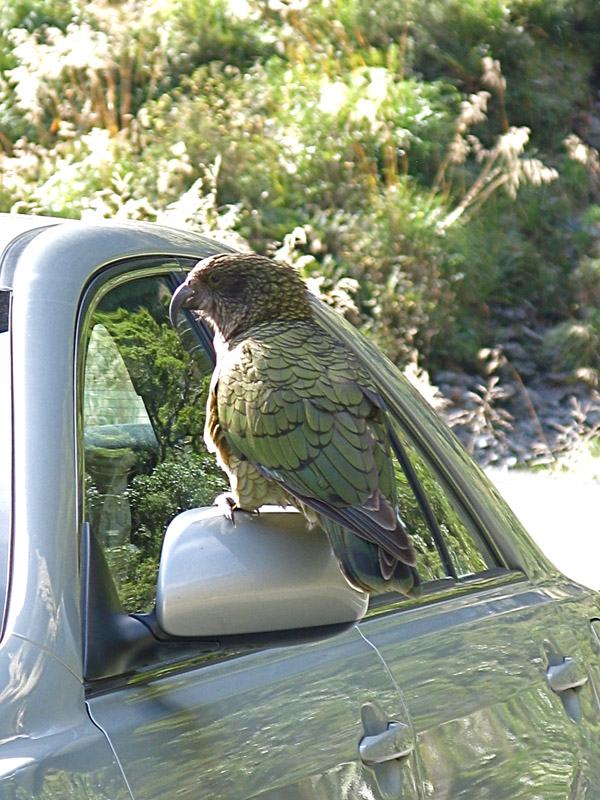 birds, which for some might mitigate fossil fuel use to some degree. No one criticizes the Family Roadtrip Vacation for being a fuel-wasting chase to bag National Parks: instead, people talk about broadening the kids’ horizons, engaging in “quality family time” and bolstering local economies. Traveling birders spend money in local economies, too. I would question why birding has been singled out for this criticism in the press.
birds, which for some might mitigate fossil fuel use to some degree. No one criticizes the Family Roadtrip Vacation for being a fuel-wasting chase to bag National Parks: instead, people talk about broadening the kids’ horizons, engaging in “quality family time” and bolstering local economies. Traveling birders spend money in local economies, too. I would question why birding has been singled out for this criticism in the press.
(Left: Birding from the car in NZ: who’s birding who? Cheeky Kea! Photo: A.Shock)
There’s also a seriouly confusing and confused bit of content in the article that seems to quote the researchers as blaming birders for un-environmental practices because birders ignore pollution problems in bird-rich areas because birds tend to thrive there. Not enough time to sort that one out in this post; I suspect the original study states it more clearly.
However, I didn’t set out to write a defense of the Greenness of Birding: most birders are aware that their passion has some not-so-environmentally-friendly aspects, and try to offset them. The concept of Green Birding (like BIGBY) is not new; there are sites and posts all over the web — just plug “green birding” into your search engine and check a few of them out. But, the Telegraph article does provide a reminder that some birding practices are fuel-consumptive or carbon-emitting, and we need to be aware and pro-active to make birding as green an activity as possible.
This might be one of those times it’s best to read the source article for yourself. Here’s the reference:
Spencer Schaffner. Environmental Sporting: Birding at Superfund Sites, Landfills, and Sewage Ponds. Journal of Sport & Social Issues, 2009; 33 (3): 206.
I couldn’t access more than an abstract online without a subscription to the online reference service.
Here’s a link to an interview with the author of the study, from Science Daily. This has more detail than the Telegraph article, and perhaps better summarizes Schaffner’s conclusions.
Tweaking Tiny Tins: making mini watercolor kits from mint boxes
2d update, April 2015, about using magnetic tape to secure pans to Altoids tin, see comments
Updated 19 May 2013 (see link at bottom of article)
Everybody in the world has posted their version of the Miniature Watercolor Box, usually ingeniously created from any flat metal tin, often Altoids, sometimes Velamints, or others (see here, here, and here, just for a few examples of many). These projects are all well-described and illustrated. I hereby add my version, but will only add a couple of tips I think are an improvement on what others have already shown.
As a hiker/backpacker, I’m always looking for a way to carry along sketching and watercolor or gouache supplies that doesn’t take up too much volume or weigh too much. (Or cost too much: commercially made ones are available at artist’s suppliers but seem exorbitant, if pretty cool.)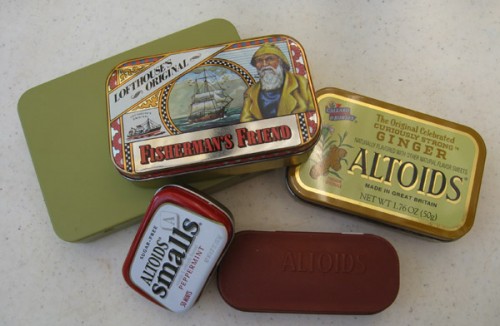 Not all hikes yield usable painting or drawing time, and I want to carry something that I won’t begrudge space to if I don’t get around to using it. So I was enthralled by the mint-tin plein-air kits I saw on the Web. It’s just the kind of project to seize my imagination, so off I went. Which brings up the first tip: if this is your kind of project, beware taking up more time constructing your kits (or posting about them!) than painting with them — and I speak from experience — it’s easy to go there. Although, the preparation can be big fun and have its own rewards.
Not all hikes yield usable painting or drawing time, and I want to carry something that I won’t begrudge space to if I don’t get around to using it. So I was enthralled by the mint-tin plein-air kits I saw on the Web. It’s just the kind of project to seize my imagination, so off I went. Which brings up the first tip: if this is your kind of project, beware taking up more time constructing your kits (or posting about them!) than painting with them — and I speak from experience — it’s easy to go there. Although, the preparation can be big fun and have its own rewards.
The basic idea is to use empty, flat, metal boxes (such as those in the top photo in various stages of the process) to carry small containers (like contact lens cups, or polymer clay depressions, or purpose-made watercolor half-pans) filled with tube watercolors pre-squeezed out into them and allowed to dry. The dried colors can be re-wet and used to paint, just like commercially available pan watercolors. But with a customized mint-tin box, you can choose your own brands and colors, or easily switch them out for landscape, botanical, or portrait projects — whatever you like. 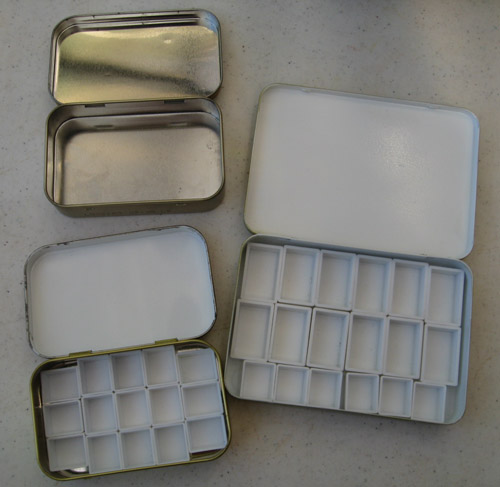 (Second tip — don’t glue your pans permanently in place, as some folks recommend. If they’re inconveniently loose, fasten them down with something temporary, like double-sided tape or that gummy product they sell; or, wedge them in with a bit of sponge or paper towel, which would be useful anyway for blotting. You want to be able to take them out to change or clean.) Many people like to accompany these tiny paint-boxes with water-brushes like those made by Niji and Sakura, which have water reservoirs in their barrels, so they don’t have to carry extra water in a bottle. (The photo on the right shows the insides of boxes in various stages, the top one awaiting enameling, the other two enameled and awaiting paint selections.)
(Second tip — don’t glue your pans permanently in place, as some folks recommend. If they’re inconveniently loose, fasten them down with something temporary, like double-sided tape or that gummy product they sell; or, wedge them in with a bit of sponge or paper towel, which would be useful anyway for blotting. You want to be able to take them out to change or clean.) Many people like to accompany these tiny paint-boxes with water-brushes like those made by Niji and Sakura, which have water reservoirs in their barrels, so they don’t have to carry extra water in a bottle. (The photo on the right shows the insides of boxes in various stages, the top one awaiting enameling, the other two enameled and awaiting paint selections.)
I don’t think I’m the only one who’s been saving metal Altoids tins for years with the idea that some day they’d come in handy. Well, this is that day. It turns out the older ones are best — the ones with the flat lids, without the product name embossed in the lid (like the one below on the left, painted with a red anti-rust primer). The embossing is fancy, but since the inner lid becomes your mixing surface, a flat one is better (more about fixing that in a minute).
The inner lids of most brands are silver like the top one in the photo above — those are usable, but it’s easier to see your colors if you’re mixing on white. Some tins are already white inside. A few folks have inserted a portion of a plastic mixing tray here; good, but there’s both extra weight and extra work to cut it out of an existing watercolor palette (although you do get to wield your Dremel tool). Others spray paint the surface white. That’s the solution I went with, but here’s my next Valuable Tip: don’t just use white spray paint, use spray-on Appliance Enamel, found with the spray paints at hardware or DIY stores. It’s perfect — stain 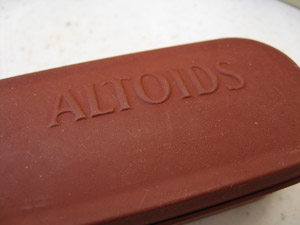 resistant, glossy, very white, quick drying, and rust proof. It was miraculous to watch a metallic surface become pure white, shiny, and even in just 2-3 coats. I couldn’t stop using the stuff — the cats were lucky they didn’t end up slick and white. Don’t forget to mask the outside with some tape before spraying. If you want to obliterate the product labeling on the outside of your tin, use regular indoor-outdoor spray paint for that — I’ve been doing that after spraying the inside (mask it so that slick white surface isn’t contaminated).
resistant, glossy, very white, quick drying, and rust proof. It was miraculous to watch a metallic surface become pure white, shiny, and even in just 2-3 coats. I couldn’t stop using the stuff — the cats were lucky they didn’t end up slick and white. Don’t forget to mask the outside with some tape before spraying. If you want to obliterate the product labeling on the outside of your tin, use regular indoor-outdoor spray paint for that — I’ve been doing that after spraying the inside (mask it so that slick white surface isn’t contaminated).
Next tip, about indented lids: if you have an embossed tin lid, your mixing surface will have dents that cause color mixtures to pool. If this bothers you, start by filling these dents on the inside of the lid with a waterproof product. I use a modeling product called Apoxie Sculpt. Just follow the instructions; you can smooth it out with a wet fingertip and then sand when dry. Polymer clay would work as well, but needs to be oven-cured. Remember to do your infilling before using the Appliance enamel. This adds a level of complication to the project, both because of having to do the leveling and procuring the product, but I know your ingenuity is up to it. If not, just forget it and find a non-embossed tin — they’re out there, but not Altoids, I don’t think — or, use the embossed lid anyway. It’s not the end of the world. (The photo on the right, below, shows an embossed lid box filled and awaiting enameling, the other box is complete; it’s the rust-colored Altoids gum box above — you can see that the indentations of the lettering have been filled and the lid now has a smooth mixing surface).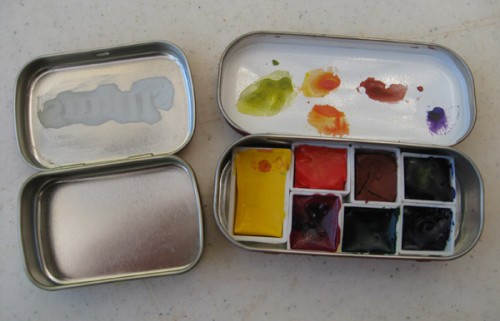
Where to put the paints. Since I don’t wear contacts lenses and don’t have access to old lens cups, I was going to make my own half-pans with polymer clay to hold the paints, but I found I didn’t have the patience to make as many as I would need. Using a solid pad of clay and making paint depressions in it is a good solution, but not for me: I wanted to be able to change out individual colors. So I went for purpose-made plastic watercolor pans and half-pans, which wedge snugly into mint tins in various combinations. Unfortunately, I found that individual empty pans are not easy to find, currently. Jerry’s Artarama has them in their catalog, but as long as I’ve been working on the project, they’ve been out of stock. I finally found another supplier, Natural Pigments, a cool vendor in Willetts, CA, who specializes in pigments and supplies for people making their own paints. They have empty pans available for a good price, but frankly their shipping fees are mysteriously high for such lightweight items. Still, beggars can’t be choosers, and that’s who I’ve been buying from. Consider that another hot tip, with a caveat (shipping price).
Now you’re ready to configure your pans geometrically in your prepared tin, and select your palette — both tasks similar to scattering rice in front of a vampire: there are those who obsess on these things. I won’t presume to dispense advice on color choice, but just a warning: the smaller the tin, the fewer your colors, the harder the choice, for most.
Let me finish off by saying that if this is the kind of project that floats your boat, there are many possibilities: different sizes of tins (to accommodate larger and smaller palettes); traveling tins for gouache (non-acrylic gouaches are re-wettable like watercolors and like them can be squeezed into pans and allowed to dry); and gifts for artist friends, with or without the paints (some artists are picky about their color choices). Now that Altoids has introduced Smalls, there’s a Really Tiny Tin to challenge your minimalist palette selection. And finally, modern mint-boxes are great, but how cool would vintage metal boxes be?! I’m thinking Kiwi shoe polish, for one…
Update: Here’s another artist’s traveling pastille box, with plastic caps for pans. What a great idea!
The Presidential Motorcade…
…just passed within a block of our house!
Turns out the street at the edge of our neighborhood — two houses away from ours — is a convenient 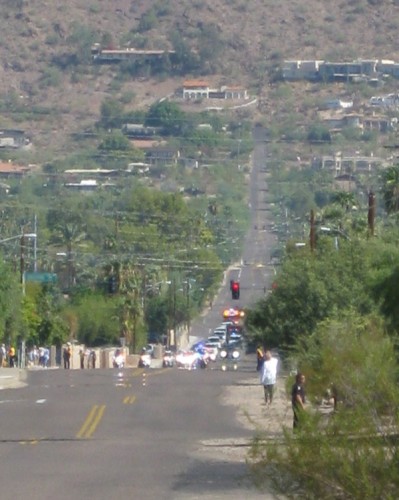 north-south thoroughfare for Leaders of the Free World on their way between Sky Harbor Airport and resort row up on the shoulders of Camelback Mountain. George W. Bush used to pass by every time he was in town en route to his favorite Phoenix digs, the Royal Palms, and on this trip the Obamas are staying at the Phoenecian.
north-south thoroughfare for Leaders of the Free World on their way between Sky Harbor Airport and resort row up on the shoulders of Camelback Mountain. George W. Bush used to pass by every time he was in town en route to his favorite Phoenix digs, the Royal Palms, and on this trip the Obamas are staying at the Phoenecian.
Yesterday afternoon, we missed President Obama by a middle-aged minute — we were still hurrying over the front garden wall when the shiny black limos, trailed by mysterious subdued gray vans, zipped past the end of our street. How disappointing! I’d even made a polite sign about health care reform, with markers and a box to brandish, but we were too late.
So as E left for work this morning, he called home to say the police units were once again positioned along every side street, including ours. Determined not to be so lame this time, I waited until I heard the chopper overhead, then grabbed a camera, a hat, and my sign and went out to wait at the corner in the shade of a mesquite tree. 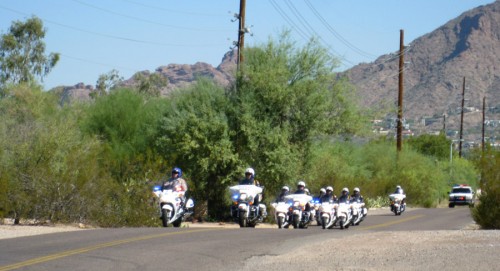 On the other side of the street a bunch of kids from the local parochial school were already out baking in the sun, and there was a sweaty pink cop who told me to stand back from the road. In just a few minutes, flashing lights could be seen up the road. Then steadily rolling down off Camelback Mountain towards us came a phalanx of motorcycle officers, some vans, two or three black limos with tiny side flags whipping, just like in the movies, white vans with clear windows crowded with Secret Service agents, Press Corps, and others,
On the other side of the street a bunch of kids from the local parochial school were already out baking in the sun, and there was a sweaty pink cop who told me to stand back from the road. In just a few minutes, flashing lights could be seen up the road. Then steadily rolling down off Camelback Mountain towards us came a phalanx of motorcycle officers, some vans, two or three black limos with tiny side flags whipping, just like in the movies, white vans with clear windows crowded with Secret Service agents, Press Corps, and others, 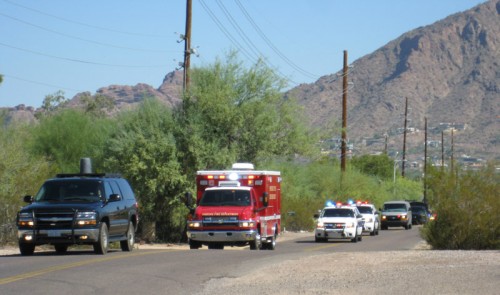 the mysterious gray vans again, an ambulance, and other serious-looking vehicles deemed necessary to keep POTUS safe on his way to a Stimulus Support speech at the Convention Center downtown.
the mysterious gray vans again, an ambulance, and other serious-looking vehicles deemed necessary to keep POTUS safe on his way to a Stimulus Support speech at the Convention Center downtown.
Did I see the Prez or First Family? Nope – just heavily tinted windows. I was waving, so I didn’t even get a picture of their limos (if they were in them!), just some of the auxiliary vehicles. But to me the important thing was that I was there with my mild little message, and for a split second in time, the President of the United States might have seen it.
That, and now I can add Presidential Motorcade to the Yard List.
(All photos A.Shock)
Cnemie-philia
Yes, that’s “Cnemie-philia” — the love of lizards in the genus Cnemidophorus, now more properly called by their current genus name, Aspidoscelis, or Whiptails. Our locals are Sonoran tiger whiptails (Aspidoscelis tigris punctilinealis), and they’re the most commonly seen lizard in our Phoenix area yard. They like it hot and are out and about during the the day, except in the highest heat, constantly looking for prey such as insects and ants, which they are welcome to, as our ants have out-sized painful defense methods. (Yet I love the ants, because they feed the flickers and the whiptails). The young whiptails have been more in evidence recently, too — tiny whippety slippets of things, sleek and fast with brilliant blue tails that largely void their stripey camouflage against granite gravel. Maybe the flashy and detachable nearly-neon blue tail is an effective decoy for color-visioned predators, distracting them from more critical body parts.
(Various watercolors in Arches 140 lb coldpress sketchbook, A.Shock; click image to enlarge)
Here’s a watercolor study of a tiger whiptail who, sadly, fell victim to the LaBrea Tarpit of our pool. I finally took it out of the freezer drawer of our fridge, much to E‘s relief, although there is still a Vaejovis scorpion chilling in there (this is when zip-lock bags really shine, I feel). When I was through drawing, I took pictures and put the limp, thawed carcass out for a Curve-billed thrasher to find for a meal, but ashes to ashes: the ants found it first, bringing the lizard’s life full circle in a nutritional sense.
Etymology
Lately I’ve been slacking off on supplying etymologies for things, but this one’s already been covered, at the very bottom of the Desert iguana post, along with a swell photo by E of a (Plateau?) tiger whiptail we saw at the Grand Canyon.
Screen-gecko-eat-moth
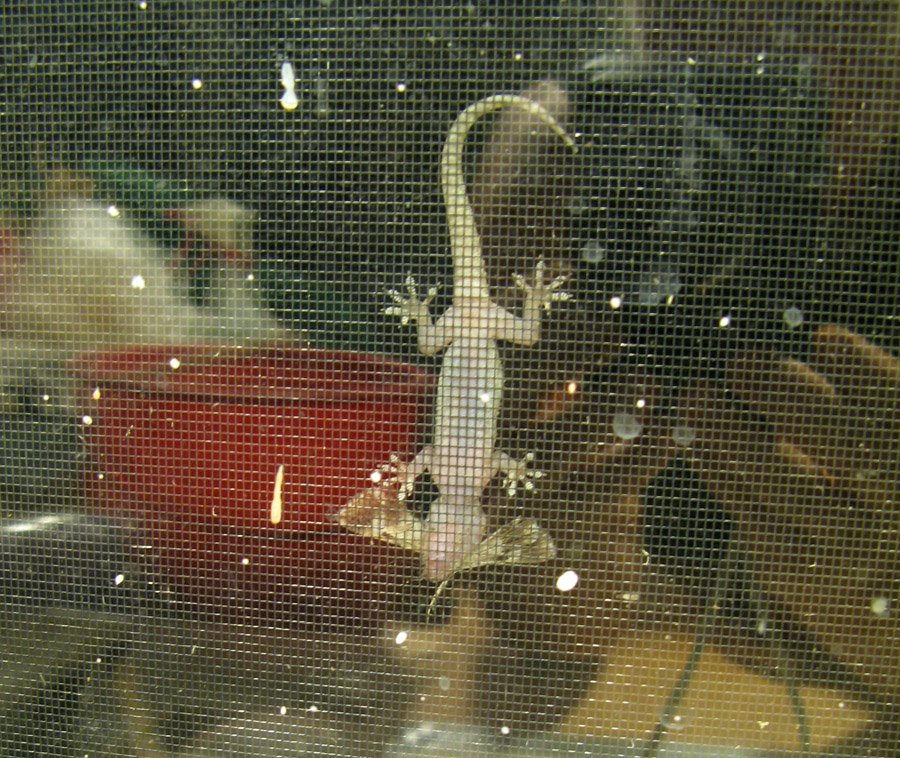 Working nocturnally in the studio gives observation opportunities not available during the sunny daylight hours. Geckos (the non-native Euro-variety) march up and down the raccoon-ravaged screens stalking moths larger than their heads. Here’s a picture of the ventral surface of one with a successful catch, all swallowed but for the wings, the reflection of my red clay-water bucket and camera visible in the clay-spattered glass. (Photo A. Shock)
Working nocturnally in the studio gives observation opportunities not available during the sunny daylight hours. Geckos (the non-native Euro-variety) march up and down the raccoon-ravaged screens stalking moths larger than their heads. Here’s a picture of the ventral surface of one with a successful catch, all swallowed but for the wings, the reflection of my red clay-water bucket and camera visible in the clay-spattered glass. (Photo A. Shock)
Unsolicited plug: For those of you into such things, there’s an invaluable new field guide available, Lizards of the American Southwest, a photographic fieldguide, edited by Lawrence Jones and Robert Lovich, published by Rio Nuevo Press just this month. Authoritative, detailed, lavishly illustrated by good photos; maybe a little big for carrying into the field, but throw it into the car for that road trip to Northern Arizona or New Mexico. It’s all in here!

